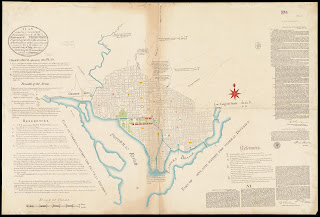Pierre Charles L'Enfant was born August 2, 1754 to Pierre L'Enfant, a painter with a good reputation in the court of King Louis XV, and Marie Lhuillier, the daughter of a minor court official. He studied at the Royal Academy in the Louvre and the Royal Academy of Painting and Sculpture but left France to join the colonist in the American Revolution in 1777 at 23. Despite his aristocratic upbringing, he closely identified with the United States and went by Peter after arriving in America.
L'Enfant was commissioned a captain, was on Washington's staff during Valley Forge, was wounded at the Siege of Savannah in 1779, and recovered to became a prisoner of war when Charleston, South Carolina surrendered in May 1780. He was exchanged the following November and joined. In May 1783, he was made a brevet major in recognition of his many contributions to the cause of colonial independence and was discharged when the Continental Army was disbanded in December 1783.



























































